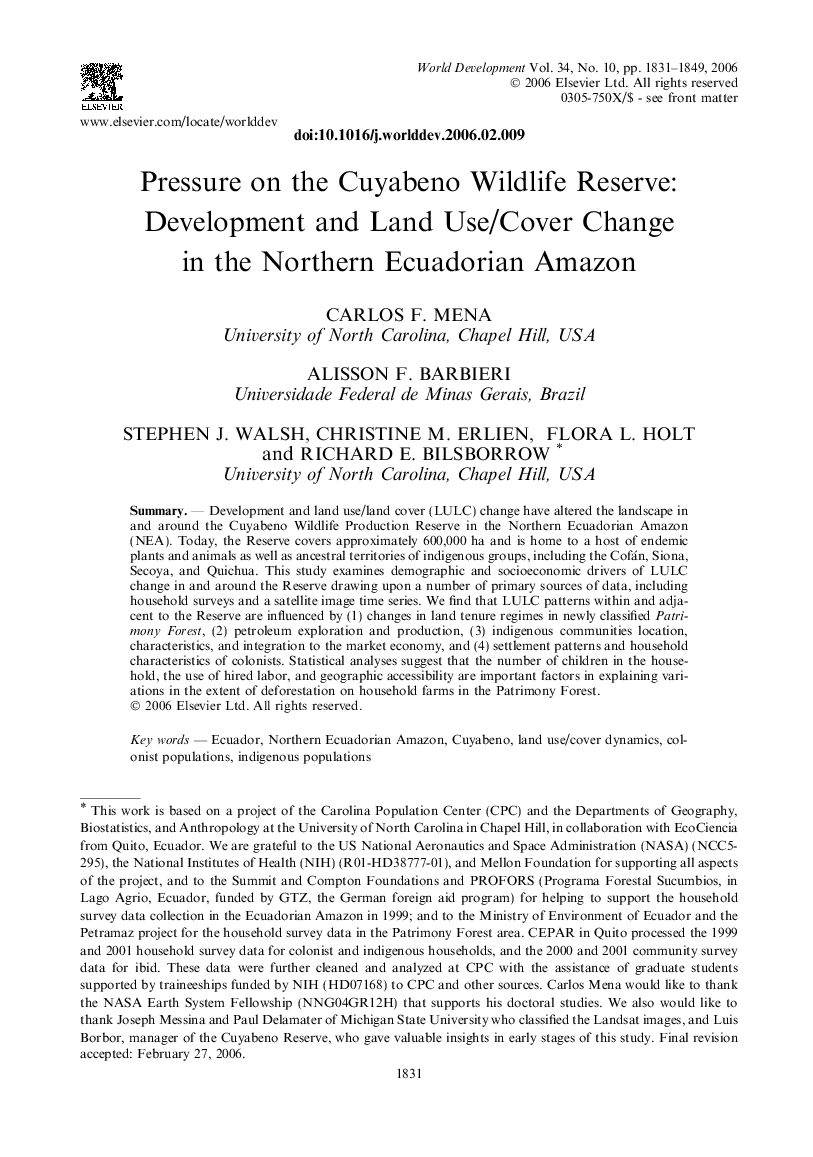| Article ID | Journal | Published Year | Pages | File Type |
|---|---|---|---|---|
| 989906 | World Development | 2006 | 19 Pages |
SummaryDevelopment and land use/land cover (LULC) change have altered the landscape in and around the Cuyabeno Wildlife Production Reserve in the Northern Ecuadorian Amazon (NEA). Today, the Reserve covers approximately 600 000 ha and is home to a host of endemic plants and animals as well as ancestral territories of indigenous groups, including the Cofán, Siona, Secoya, and Quichua. This study examines demographic and socioeconomic drivers of LULC change in and around the Reserve drawing upon a number of primary sources of data, including household surveys and a satellite image time series. We find that LULC patterns within and adjacent to the Reserve are influenced by (1) changes in land tenure regimes in newly classified Patrimony Forest, (2) petroleum exploration and production, (3) indigenous communities location, characteristics, and integration to the market economy, and (4) settlement patterns and household characteristics of colonists. Statistical analyses suggest that the number of children in the household, the use of hired labor, and geographic accessibility are important factors in explaining variations in the extent of deforestation on household farms in the Patrimony Forest.
